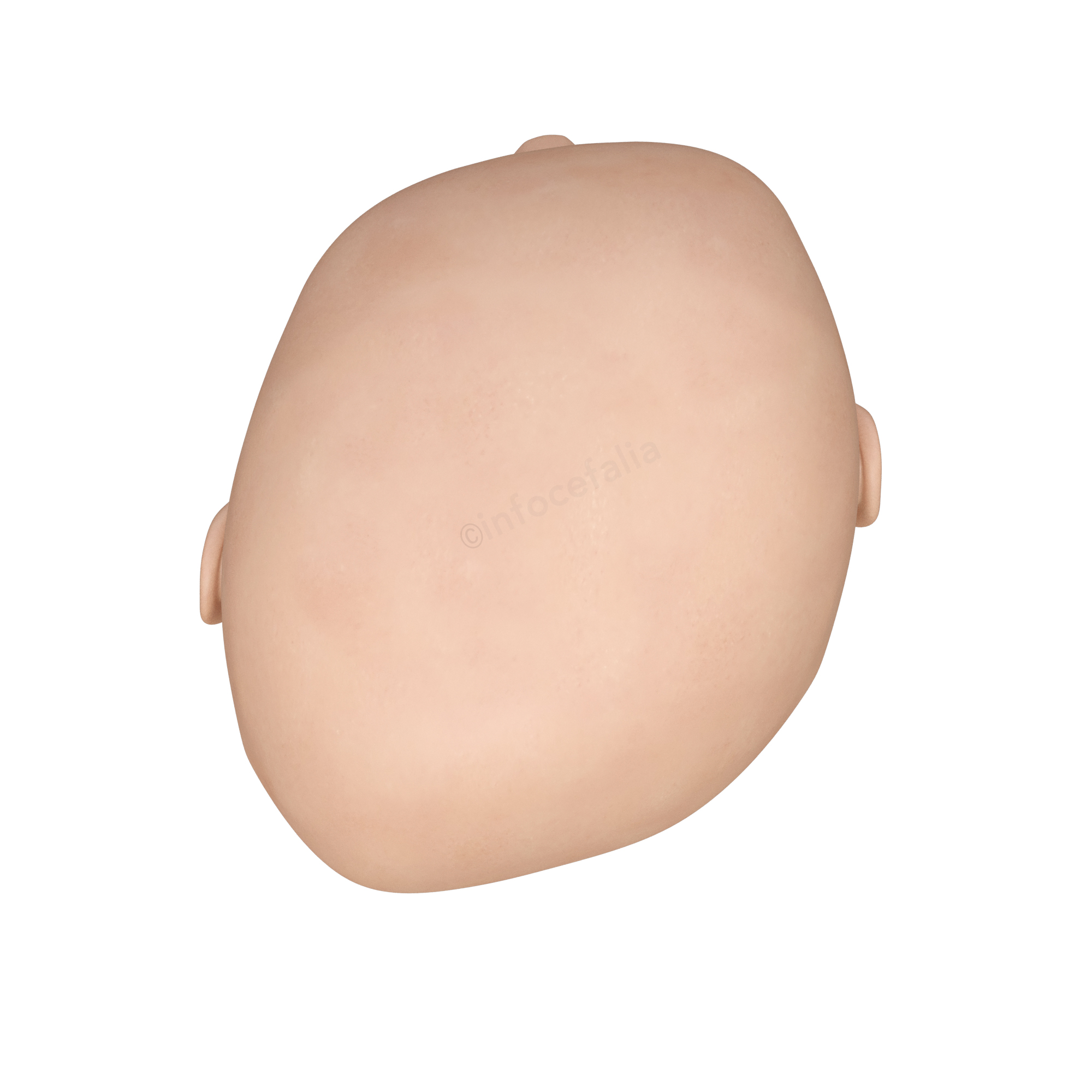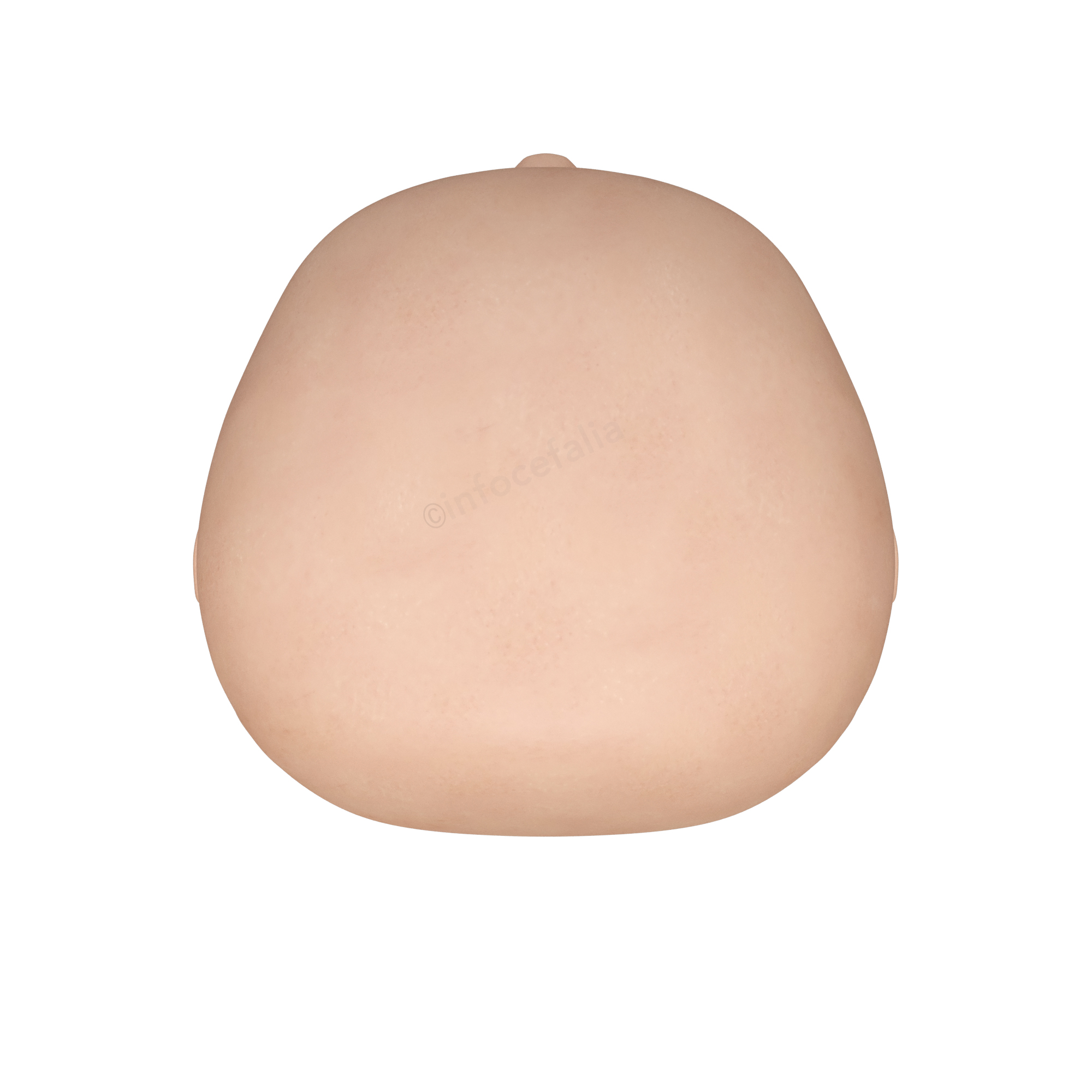What is
Positional cranial deformities are alterations in the shape of the baby’s head that appear during the first months of life, when the skull is especially soft and fragile.
As the baby’s brain grows, the cranial bones expand to provide adequate space. If an external force (for example, a flat surface such as a crib) limits this expansion in a certain area, growth will be compromised in this area.
They are classified according to the area of the skull affected, although combined forms can also occur.
The most frequent form is plagiocephaly, which covers up to 85% of cases.



Plagiocephaly
Most frequent positional cranial deformity. Flattening of one side of the head at the back.
It is highly associated with muscular torticollis.



Brachycephaly
It not only affects one side of the head, but the entire back area.
Head considerably wide, short and flattened at the back.



Scaphocephaly
It is also known as Dolichocephaly.
The flattening occurs on both sides of the skull and occurs especially in premature babies.
It consists of an elongated and narrow head.
But...
why do they appear?
Sleeping in a supine position, that is, face up, is the main cause of the appearance of these deformities.
The recommendation to sleep on your back (1994) in order to reduce the incidence of Sudden Infant Death Syndrome (SIDS) has favored the appearance of cases of plagiocephaly and brachycephaly. This does not mean that babies should stop sleeping on their backs, since it is the recommended position for being the safest, but rather that we must take measures to prevent these deformities from appearing.
STIFF NECK? Many studies have found that up to 9 out of 10 babies with plagiocephaly have torticollis at the same time. It is necessary to diagnose torticollis as soon as possible in order to start treating it and prevent the possible appearance of plagiocephaly, or to prevent it from getting worse.
Graphic. Number of registered cases of positional plagiocephaly. Data obtained by the Neurosurgery service of the Sant Joan de Déu Hospital in Barcelona between 1996 and 2010. An increase in the incidence of positional plagiocephalies is clearly observed. Source: Positional plagiocephaly: an elementary work (2012)
Up to 90% of babies with congenital muscular torticollis (CMT) also have some degree of plagiocephaly.
We invite you to enter our informative web page, where you will find more information about what positional cranial deformities are, why they appear and, above all, how we can prevent and correct them.
